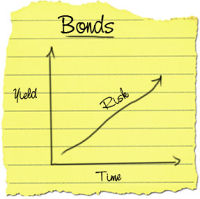 The common misconception is that Bonds and Sukuk have little risk. This is not true. Just like any other financial instrument, they have certain inherent risks but these can be reduced by diversification across other asset classes:
The common misconception is that Bonds and Sukuk have little risk. This is not true. Just like any other financial instrument, they have certain inherent risks but these can be reduced by diversification across other asset classes:
- Credit risk -also known as ‘issuer risk’ or ‘default risk’. Risk that the issuer may not be able to meet its obligations in terms of coupon payments or may not be able to pay the principal amount back to the bondholder at maturity. Government bonds are generally considered default-free, while corporate bond risk is measured by Rating Agencies.
- Interest rate risk – risk that the value of the bond may be adversely affected by the prevailing direction of interest rates. The single most important factor influencing the price of bonds is the prevailing market interest rate (e.g. if Bank Negara reduces interest rates, bonds become more attractive and its prices will rise) Therefore, the study of interest rate movements is important for bond trading.
- Liquidity risk – risk that a bondholder may be unable to sell a bond due to thin trading conditions.
- Inflation risk -risk that the value of a bondholder’s investment will be eroded by the effects of inflation. Fixed rate coupons and principal amounts will end up being worth less in real terms if inflation is high during the bond’s lifetime.
As a result of these risks, the price of the bond may fluctuate, thus resulting in capital gain or loss if the investor liquidates his holding. In the case of a default, the investor may not receive payments of their interest and principal owing
The Relationship of Risk and Return
The normal relationship is that an investor who takes higher risk demands a higher return.
For bonds, this can be summarised as:
– Higher Risk = Higher Return / Yield
– Lower Risk = Lower Return /Yield
From this we can see that risk-free bonds such as those issued or guaranteed by the Government offer the lowest yields, while more risky bonds issued by corporations will offer higher yields.
For corporate bonds, the rating scale from rating agencies measures the riskiness of the bond.
For example:
AAA = Lowest risk corporate, lower return /yield
B = Higher risk corporate, higher return / yield
The relationship between the risk and return appetite for the whole market for a specified time period can be graphically seen in a yield curve.
The yield curve is the starting point for every investor. One must study the yield curve first before deciding if a bond offers an attractive yield given its risk and tenor.
Bondweb : powered by the resources of Bond Pricing Agency Malaysia
